- Preparing the Soil
- 1. Test the soil
- 2. Amend the soil
- 3. Loosen the soil
- 4. Prepare the planting area
- 5. Add organic fertilizer
- 6. Water the soil
- 7. Mulch the soil
- Choosing the Right Pepper Variety
- 1. Heat Level:
- 2. Flavor:
- 3. Size and Shape:
- 4. Growth Habit:
- 5. Growing Conditions:
- Starting Seedlings Indoors
- 1. Choose the Right Containers
- 2. Prepare the Soil
- 3. Sow the Seeds
- 4. Provide Optimal Conditions
- 5. Thin Out the Seedlings
- 6. Harden Off the Seedlings
- 7. Transplanting
- 8. Care and Maintenance
- 9. Enjoy Your Peppers
- Providing Proper Lighting
- Watering and Fertilizing
- Watering:
- Fertilizing:
- Transplanting Seedlings
- Prepare the transplant site
- Choose the right time to transplant
- Water the seedlings
- Prepare the new container or garden bed
- Transplant the seedlings
- Water and mulch
- Provide care after transplanting
- Protecting Seedlings from Pests and Diseases
- 1. Start with Clean Soil
- 2. Provide Adequate Spacing
- 3. Regularly Inspect the Seedlings
- 4. Practice Proper Watering
- 5. Implement Natural Pest Control Methods
- 6. Remove Infected Plants Promptly
- 7. Use Organic Pesticides and Fungicides
- 8. Practice Crop Rotation
- Harvesting and Saving Seeds
- 1. Selecting the Peppers
- 2. Extracting the Seeds
- 3. Fermentation
- 4. Cleaning and Drying
- 5. Proper Storage
- 6. Testing Seed Viability
- “Question-Answer”
- When is the best time to plant pepper seedlings?
- What is the ideal temperature for germinating pepper seeds?
- Do pepper seedlings require any special care?
- How long does it take for pepper seedlings to be ready for transplanting?
- Can pepper seedlings be grown indoors?
- “Video” A Complete Guide for Growing Tomatoes & Peppers – Seed to Harvest: Every Step!/Table of Contents
Are you ready to take your gardening skills to the next level? Planting peppers for seedlings can be a rewarding and enjoyable experience. Whether you’re a seasoned gardener or just starting out, this ultimate guide will equip you with everything you need to know to successfully grow pepper plants from seeds in 2023.
Growing peppers from seedlings offers a variety of benefits. Not only do you have control over the entire growing process, but you’ll also have access to a wider selection of pepper varieties to choose from. Plus, starting your peppers from seed allows you to get a head start on the growing season, ensuring healthier plants and a greater yield.
In this guide, we’ll walk you through each step of the process, from selecting the right pepper varieties for your garden, to preparing the soil, planting the seeds, and caring for your seedlings. We’ll share expert tips and tricks to help you avoid common pitfalls, and provide you with essential information on watering, fertilizing, and transplanting your pepper seedlings. By the end, you’ll have the knowledge and confidence to grow thriving pepper plants that will produce an abundance of flavorful fruits.
So, whether you’re dreaming of growing mild bell peppers for salads or spicy chili peppers for your favorite recipes, this ultimate guide is your go-to resource for planting peppers for seedlings in 2023. Get ready to unleash your green thumb and enjoy the satisfaction of growing your own delicious and vibrant peppers!
Preparing the Soil
Before planting pepper seedlings, it is crucial to prepare the soil properly. By ensuring that the soil is healthy and nutrient-rich, you can give your peppers the best chance of growing into strong and productive plants. Here is a step-by-step guide on how to prepare the soil for planting peppers:
1. Test the soil
Start by testing the soil to determine its pH level and nutrient content. This can be done using a soil testing kit or by sending a soil sample to a laboratory for analysis. Peppers thrive in soil with a pH level between 6.0 and 7.0.
2. Amend the soil
Based on the results of the soil test, you may need to amend the soil to adjust its pH level or nutrient content. If the pH level is too low, you can add lime to raise it. If the pH level is too high, you can add sulfur or peat moss to lower it. Additionally, you can add organic matter, such as compost or well-rotted manure, to enhance the soil’s nutrient content.
3. Loosen the soil
Pepper plants require loose, well-draining soil for optimal growth. Use a garden fork or a tiller to loosen the soil to a depth of at least 12 inches. Remove any rocks, weeds, or debris that may hinder the growth of the seedlings.
4. Prepare the planting area
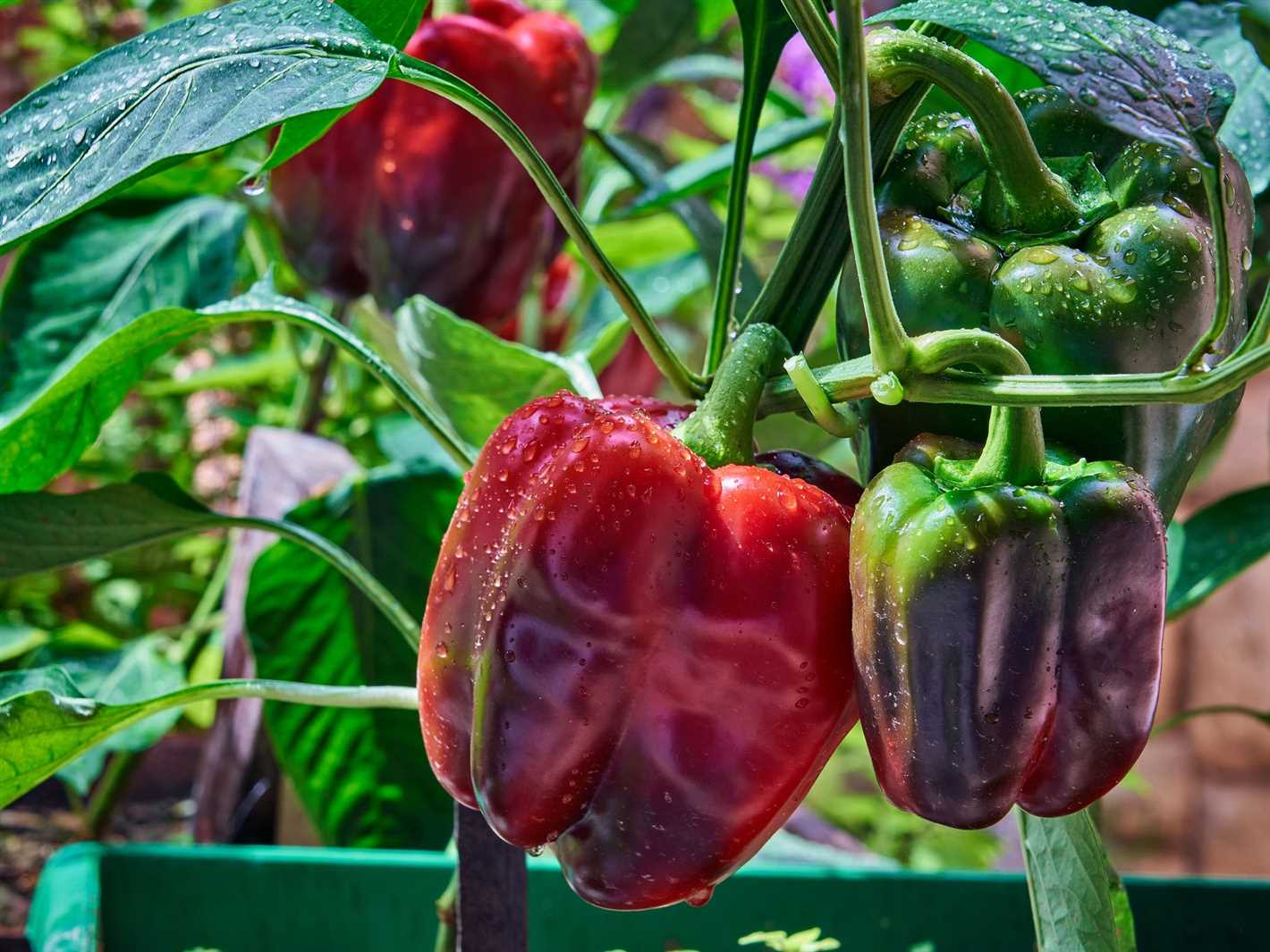
Once the soil is loosened, prepare the planting area by creating rows or mounds. This will provide the pepper seedlings with the space they need to grow and expand their root systems. Ensure that there is enough spacing between the rows or mounds to allow for proper air circulation and sunlight exposure.
5. Add organic fertilizer
Before planting the pepper seedlings, consider adding an organic fertilizer to the soil. This will provide additional nutrients that will support the growth of the plants. Follow the manufacturer’s instructions for the appropriate amount to use based on the size of your planting area.
6. Water the soil
After preparing the soil, thoroughly water the area to ensure that it is evenly moist. This will help settle the soil and provide a good environment for the pepper seedlings to establish their roots.
7. Mulch the soil
To help retain moisture and suppress weeds, consider applying a layer of organic mulch, such as straw or wood chips, to the soil surface. This will also help regulate soil temperature and protect the roots of the pepper seedlings from extreme heat or cold.
Following these steps will ensure that your soil is well-prepared for planting pepper seedlings. By providing the right conditions for growth, you can set your peppers up for success in producing healthy and abundant fruits.
Choosing the Right Pepper Variety
When it comes to planting peppers for seedlings, choosing the right variety is crucial. There are many different types of peppers available, each with its own unique flavor, heat level, and growth requirements. Here are some factors to consider when selecting the perfect pepper variety for your garden:
1. Heat Level:
Peppers come in various heat levels, ranging from mild to extremely hot. Think about your personal tolerance for heat and how you plan to use the peppers. If you enjoy spicy food, you may opt for a hotter variety like habanero or ghost peppers. For milder options, bell peppers or banana peppers may be more suitable.
2. Flavor:
Pepper varieties also differ in terms of flavor profiles. Some peppers have a sweet and fruity taste, while others have a smoky or earthy flavor. Consider the recipes you intend to use the peppers in or your personal preferences when it comes to taste.
3. Size and Shape:
Peppers come in various shapes and sizes, including bell-shaped, elongated, round, and even wrinkled. Think about how you plan to use the peppers – whether they will be stuffed, chopped, or used whole. This will help you decide on the best pepper variety to grow.
4. Growth Habit:
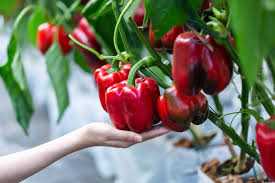
Pepper plants can have different growth habits, such as determinate or indeterminate. Determinate varieties tend to grow in a bush-like shape and produce a larger yield of peppers at once. Indeterminate varieties, on the other hand, have a vine-like growth habit and produce peppers continuously throughout the season.
5. Growing Conditions:
Consider the growing conditions in your garden or the space you have available for planting peppers. Some varieties are more suitable for container gardening, while others thrive in raised beds or traditional garden plots. Take into account factors like sunlight, soil type, and climate when selecting the right pepper variety.
By considering these factors, you can choose the perfect pepper variety that suits your taste preferences, cooking needs, and growing conditions. It’s always a good idea to try growing a few different varieties to experiment and find your favorites.
Starting Seedlings Indoors
1. Choose the Right Containers
When starting seedlings indoors, it’s important to choose the right containers. Use small pots or trays with drainage holes to ensure proper water drainage. You can also use seed starting trays that have compartments for individual seeds.
2. Prepare the Soil
Prepare a well-draining soil mix for your seedlings. Use a combination of peat moss, vermiculite, and perlite to create a lightweight and airy soil. Make sure to sterilize the soil before planting to prevent diseases.
3. Sow the Seeds
Sow the pepper seeds into the prepared soil according to the instructions on the seed packet. Make sure to space the seeds evenly and cover them with a thin layer of soil. Lightly press down on the soil to ensure good seed-to-soil contact.
4. Provide Optimal Conditions
Place the seed trays or pots in a warm and well-lit area, such as a south-facing window or under grow lights. Maintain a temperature of around 70-80°F (21-27°C) for optimal germination. Keep the soil slightly moist but not waterlogged, as excess water can lead to rotting.
5. Thin Out the Seedlings
Once the seedlings have emerged and developed their first set of true leaves, it’s important to thin them out. This means removing the weaker seedlings to give the stronger ones more space, nutrients, and light to grow.
6. Harden Off the Seedlings
As the seedlings grow, they need to be gradually acclimated to outdoor conditions before transplanting. This process, known as hardening off, involves exposing the seedlings to outdoor conditions for a few hours each day, gradually increasing the duration over a week or two.
7. Transplanting
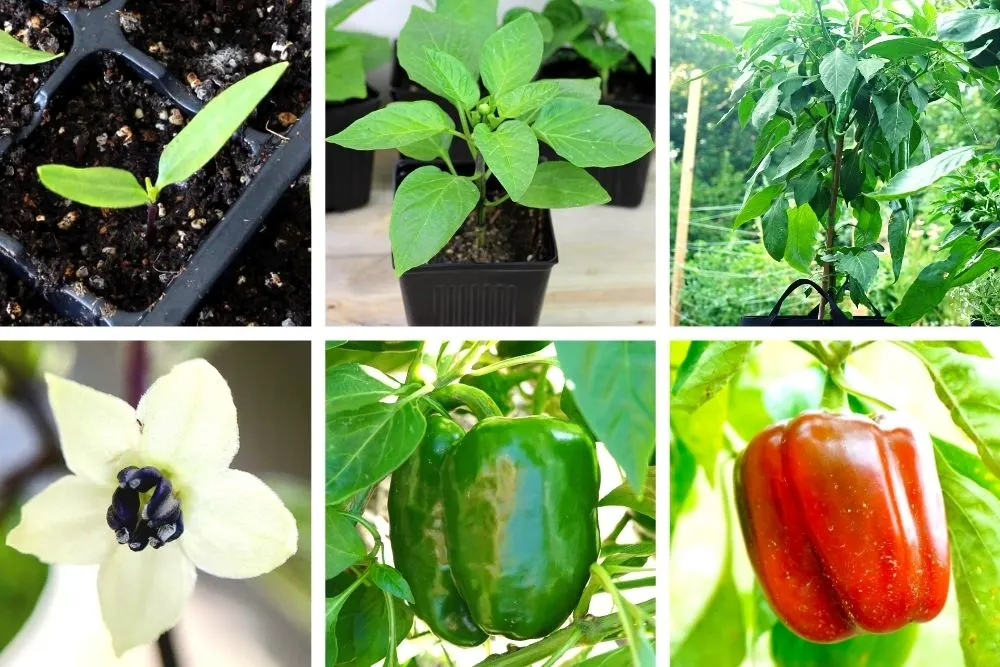
When the seedlings are around 6-8 weeks old and all danger of frost has passed, they can be transplanted into the garden or larger containers. Make sure to space the plants at least 18-24 inches apart to allow for proper growth.
8. Care and Maintenance
Once transplanted, continue to provide the seedlings with proper care. Water them regularly, ensuring the soil is consistently moist but not soggy. Use organic fertilizers to nourish the plants and keep an eye out for common pests and diseases.
9. Enjoy Your Peppers
With proper care and maintenance, your pepper seedlings will grow into healthy plants and eventually produce delicious peppers. Harvest the peppers when they reach their desired size and enjoy them in your favorite recipes!
Providing Proper Lighting
When growing pepper seedlings, providing proper lighting is crucial for their healthy growth and development. Without adequate light, seedlings can become weak and leggy, leading to poor root development and overall poor plant health.
Natural Light:
- Place the pepper seedlings near a south-facing window to receive the maximum amount of sunlight.
- Rotate the seedlings every few days to ensure even lighting on all sides.
- If natural light is limited, consider using a grow light to supplement the lighting.
Grow Lights:
- Choose a full-spectrum grow light that closely mimics the sunlight.
- Position the grow light about 6-12 inches above the seedlings, adjusting the height as the plants grow taller.
- Keep the grow light on for 12-16 hours per day to provide sufficient light for the seedlings.
Lighting Tips:
- Avoid placing the seedlings too close to the grow light, as it can cause heat stress and damage the plants.
- Monitor the temperature around the seedlings and make sure it doesn’t get too hot or too cold.
- Use a timer to automate the lighting schedule and ensure consistent light exposure.
By providing proper lighting for your pepper seedlings, you can promote strong and healthy growth, setting them up for success when it’s time to transplant them outdoors.
Watering and Fertilizing
In order to ensure healthy growth and a bountiful harvest of peppers, proper watering and fertilizing techniques are crucial. Here are some tips to keep in mind:
Watering:
- Peppers need consistent moisture, so make sure to water them regularly. Aim to keep the soil evenly moist at all times, but avoid overwatering as it can lead to root rot.
- Water deeply, ensuring that the water reaches the root zone. This encourages the roots to grow deep and makes the plants more drought-resistant.
- It is best to water peppers in the early morning or late afternoon to minimize evaporation and give the plants a chance to dry off before nightfall.
- Use a watering can or a gentle spray attachment on a hose to water the plants. Avoid getting the leaves wet, as this can promote disease development.
Fertilizing:
- Peppers are heavy feeders, so they require regular fertilization. Before planting the seedlings, prepare the soil by incorporating compost or well-rotted manure to provide them with a nutrient-rich environment.
- Once the plants have established and started producing flowers, begin fertilizing them every two to three weeks. Use a balanced, water-soluble fertilizer with equal amounts of nitrogen, phosphorus, and potassium.
- Apply the fertilizer according to the package instructions, taking care not to overfertilize, as this can lead to excessive foliage growth and fewer peppers.
- Consider using organic fertilizers, such as fish emulsion or seaweed extract, to provide a natural source of nutrients without chemical additives.
By following these watering and fertilizing guidelines, you can ensure that your pepper seedlings receive the necessary nutrients and moisture to grow into healthy, robust plants capable of producing a plentiful harvest of delicious peppers.
Transplanting Seedlings
Once your pepper seedlings have grown to a suitable size, it is time to transplant them into their final growing containers or into your garden. This step is crucial for their continued growth and development.
Prepare the transplant site
Before transplanting, make sure the soil is well-prepared and free from weeds. Clear away any debris and loosen the soil to allow for easy root penetration.
Choose the right time to transplant
Pepper seedlings are delicate and susceptible to transplant shock, so it’s important to choose the right time to transplant. Wait until all danger of frost has passed and the soil temperature consistently stays above 60°F (15°C).
Water the seedlings
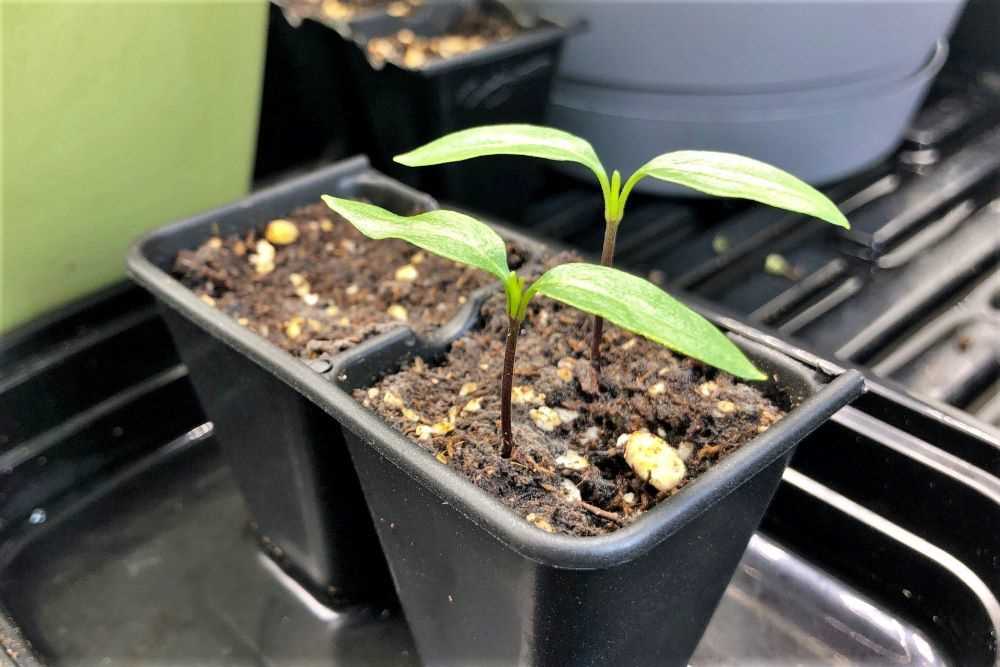
Before transplanting, water the seedlings thoroughly to ensure that the root ball stays intact during the process.
Prepare the new container or garden bed
If you are transplanting the seedlings into containers, choose pots that have drainage holes and are large enough to accommodate the growing roots. Fill the pots with high-quality potting mix.
If transplanting into a garden bed, dig holes that are slightly larger than the root ball of the seedlings and space them at least 12 inches apart.
Transplant the seedlings
Gently remove the seedlings from their original containers, being careful not to damage the roots. Place each seedling into the prepared hole, making sure the root ball is covered with soil. Gently press the soil around the base of the seedling to secure it in place.
Water and mulch
After transplanting, water the seedlings thoroughly to help them settle into their new environment. Adding a layer of organic mulch around the base of the plants can help retain moisture and suppress weeds.
Provide care after transplanting
After transplanting, continue to monitor the seedlings closely. Water them regularly, keeping the soil evenly moist but not waterlogged. Protect the seedlings from extreme weather conditions, such as strong winds or excessive heat.
It’s also a good idea to provide support for pepper plants, such as stakes or cages, to prevent them from falling over as they grow.
By following these transplanting guidelines, you can ensure the successful growth of your pepper seedlings and increase your chances of a bountiful pepper harvest.
Protecting Seedlings from Pests and Diseases
When growing pepper seedlings, it is essential to protect them from pests and diseases that can hinder their growth and damage your plants. Here are some important steps you can take to keep your seedlings safe:
1. Start with Clean Soil
Using clean and sterilized soil is crucial for preventing the introduction of diseases and pests. Ensure that the soil you use for planting the seedlings is free from any pathogens or insect eggs.
2. Provide Adequate Spacing
Avoid overcrowding your seedlings as it can create a warm and humid environment, which is ideal for pests and diseases to thrive. Maintain sufficient spacing between plants to allow proper air circulation and reduce the risk of spreading diseases.
3. Regularly Inspect the Seedlings
Monitor your seedlings regularly for any signs of pests or diseases. Look for chewed leaves, discoloration, wilting, or any unusual growth. Early detection can help prevent the spread of pests and diseases to other plants.
4. Practice Proper Watering
Avoid over-watering your seedlings as it can create favorable conditions for root diseases. Water the plants at their base, ensuring that the soil is moist but not waterlogged. Proper drainage is essential to prevent the growth of fungi and bacteria.
5. Implement Natural Pest Control Methods
Use natural pest control methods like introducing beneficial insects, such as ladybugs or lacewings, to prey on harmful pests like aphids and caterpillars. You can also attract birds to your garden or use companion planting to repel pests.
6. Remove Infected Plants Promptly
If any of your seedlings show signs of disease, promptly remove them from the garden to prevent the spread of infection. Properly dispose of infected plants away from your other healthy plants to minimize the risk of contamination.
7. Use Organic Pesticides and Fungicides
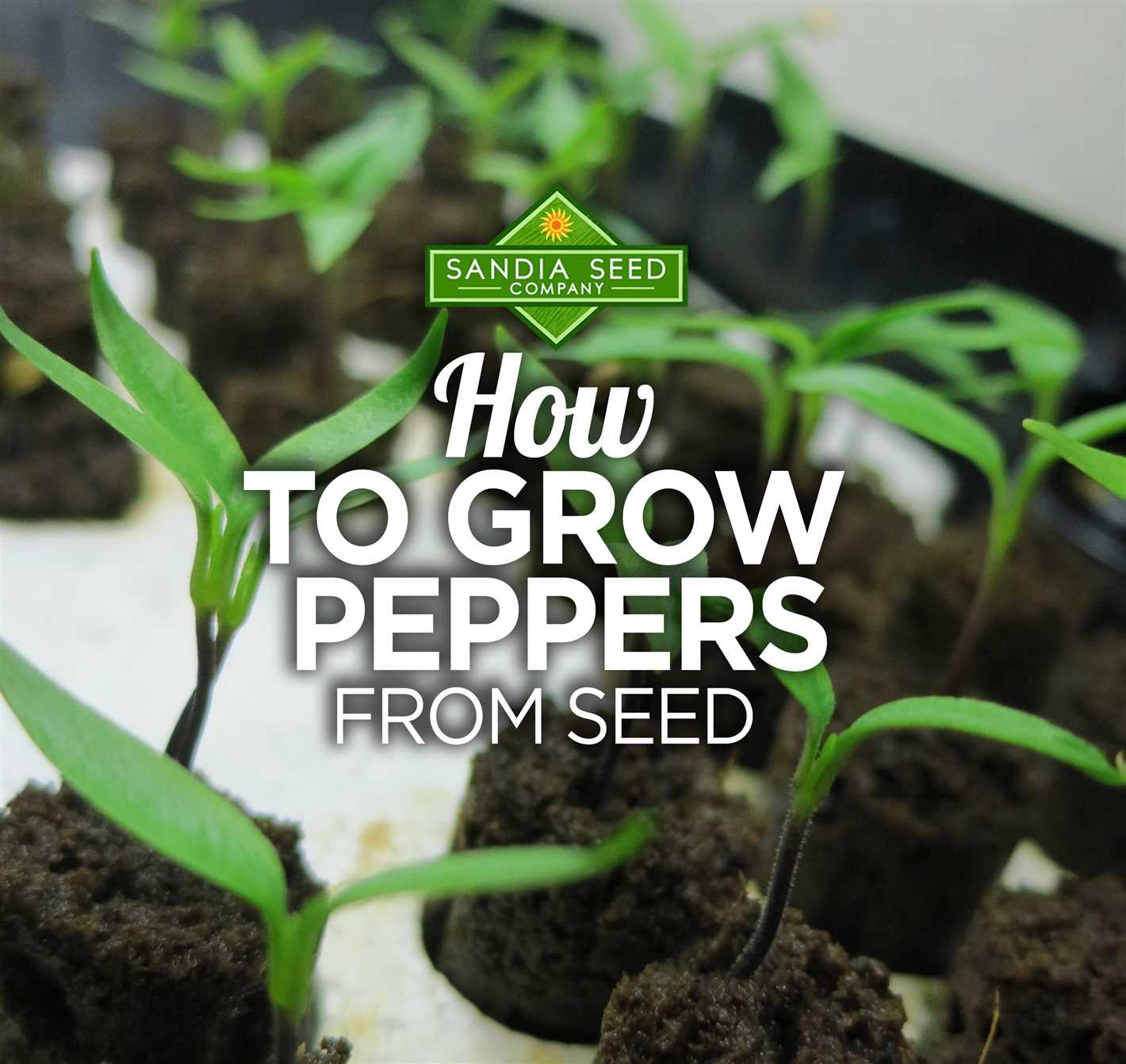
If natural methods are not sufficient, consider using organic pesticides and fungicides when necessary. Be sure to follow the instructions on the product label and use them sparingly to avoid harming beneficial insects or creating chemical imbalances in the soil.
8. Practice Crop Rotation
To prevent the buildup of pests and diseases in the soil, avoid planting peppers or other related plants in the same location year after year. Instead, practice crop rotation and move your pepper plants to different areas of your garden.
By following these steps and maintaining a vigilant approach, you can effectively protect your pepper seedlings from pests and diseases, ensuring healthy and thriving plants for the future.
Harvesting and Saving Seeds
Harvesting and saving pepper seeds is a rewarding process that allows you to continue growing and enjoying your favorite pepper varieties year after year. Here are some steps to help you successfully harvest and save pepper seeds:
1. Selecting the Peppers
Choose healthy and ripe peppers from the plants that you want to save seeds from. Look for peppers that are fully mature and have developed their characteristic color. Avoid using peppers from hybrid varieties, as the seeds may not produce plants that resemble the parent plant.
2. Extracting the Seeds
Cut the pepper open and carefully remove the seeds using a clean knife or spoon. Be cautious not to damage the seeds during this process. Place the seeds in a clean container such as a small glass jar or a paper envelope.
3. Fermentation
To ensure successful germination, it is recommended to ferment the pepper seeds. Fermentation helps to remove the gelatinous coating around the seeds, which can inhibit germination. Leave the seeds in their container with a small amount of water for about 2-3 days. Stir the mixture once or twice a day.
4. Cleaning and Drying
After the fermentation process, strain the seeds and rinse them with clean water to remove any remaining residues. Spread the seeds on a paper towel or a clean cloth and allow them to dry completely. Make sure to label the seeds with the pepper variety and the date of harvesting.
5. Proper Storage
Store the dried pepper seeds in airtight containers such as glass jars or sealed envelopes. Place the containers in a cool and dry location away from direct sunlight. Properly stored pepper seeds can remain viable for several years.
6. Testing Seed Viability
If you are unsure about the germination rate of your saved pepper seeds, you can perform a simple viability test. Wet a paper towel, place a few seeds on it, and fold it. Keep the paper towel moist, and check after a week to see how many seeds have germinated. This will give you an idea of the viability of the seed batch.
By following these steps, you can successfully harvest and save pepper seeds for future planting. Remember to experiment with different pepper varieties and keep track of the characteristics of each to help you select the best seeds for your garden in the future.
“Question-Answer”
When is the best time to plant pepper seedlings?
The best time to plant pepper seedlings is typically 6-8 weeks before the last spring frost date in your area. This ensures that the seedlings have enough time to grow and develop before being transplanted outdoors.
What is the ideal temperature for germinating pepper seeds?
Pepper seeds germinate best in warm temperatures between 75-85°F (24-29°C). Maintaining a consistent temperature during the germination process is important for successful seedling development.
Do pepper seedlings require any special care?
Yes, pepper seedlings require some special care to ensure their healthy growth. They need to be watered regularly, but be careful not to overwater them as this can lead to root rot. They also benefit from additional light sources, such as fluorescent or LED lights, to ensure they receive adequate light for photosynthesis.
How long does it take for pepper seedlings to be ready for transplanting?
Pepper seedlings typically take around 8-12 weeks to be ready for transplanting. This can vary depending on the pepper variety and growing conditions. It’s important to monitor the growth of the seedlings and wait until they have developed a strong root system and sturdy stems before transplanting them outdoors.
Can pepper seedlings be grown indoors?
Yes, pepper seedlings can be successfully grown indoors. It’s important to provide them with adequate light, warmth, and moisture. Using grow lights or placing them near a sunny window can help provide the necessary light. It’s also important to provide proper air circulation to prevent disease and encourage healthy growth.







